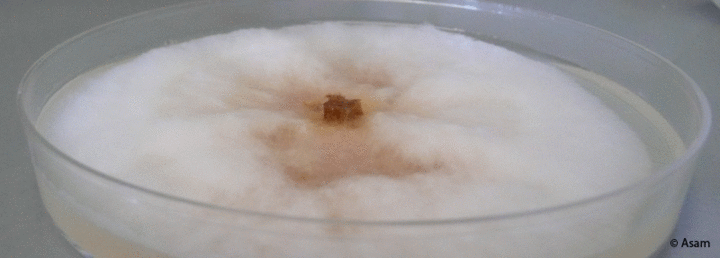
Mycotoxins
Mycotoxins are secondary mould metabolites that are toxic to humans, animals and plants.
The colloquial term “mould” comprises a series of ubiquitous saprophytic microorganisms that grow fast and proliferate vegetatively. Their distinctive mycelium forms a white to intensely coloured, furry layer on substrates affected [1, 2].
Some of the moulds growing on foods are capable to produce mycotoxins. For the most important mycotoxins information is summarized in the following:
- Alternaria toxins
- Fusarium toxins
- Aflatoxins
- Ochratoxin A
- Patulin
- Ergot alkaloids
References
Alternaria toxins
The Genus Alternaria
Moulds of the genus Alternaria are ubiquitous. Saprophytic as well as actively plant pathogenic species may occur and, therefore, this genus is particularly relevant to cultivation of crop plants [1].
Pathogenic fungal species affect plants in general and cause characteristic symptoms such as early blight, brown spot and black pit, or black rot.
In most cases this infection is caused by a host-specific strain and the most important ones are A. brassicae (brassicas), A. citri (citruses), A. dauci (carrots), A. alternata f.sp. lycopersici (tomatoes), A. solani (potatoes) und A. triticina (wheat) [2].
After harvesting and upon suitable conditions (damage of the surface or unsuitable storage) all crops may be infected by the opportunistic strain Alternaria alternata in principle. Growth of A. alternata may occur at an aw-Wert > 0,88 and at a temperature ranging between 2 and 32 °C [3].
Many Alternaria species produce the dark brown to black pigment melanin, which is biosynthesized via the polyketide pathway and deposited in the spores. Due to this property Alternaria is included in the group of “black fungi”. Melanin is likely to function to protect against UV radiation, which renders the fungus significantly more resistant against environmental factors [4].
| Conidio spores of Alternaria alternata |
Alternaria proliferates mainly vegetatively via conidia spores. These are dark due to inclusion of melanin and have an oval to stretched egglike shape, are septated and often arranged in chains [1]. Differentiation between the single Alternaria species via appearance of the conidia spores is the most prevalent method, but requires long experience and often disagrees with molecular genetic analysis [2].
Generation of toxins
Moulds belonging to the genus Alternaria may generate a series (at least 70) of structurally very distinct toxins, the most important of which are grouped as follows [1]:
- Tetramic acid derivatives (tenuazonic acid)
- Dibenzopyrone derivatives (AOH, AME, ALT)
- Perylene derivatives (ATX-I, -II, -III)
- Cyclic peptides (Tentoxin)
- Compounds with similar structure to sphingosine (AAL toxins)
Many further toxins are host specific phytotoxins.
References
[1] Bottalico, A., Logrieco, A.; In: Mycotoxins in Agriculture and Food Safety; Marcel Dekker, Inc.: New York, NY, 1998, S. 65-108
[2] Logrieco A. et al. (2009) World Mycotoxin Journal, 2: 129-140
[3] Ostry V. (2008) World Mycotoxin Journal, 1: 175-188
[4] Bell A.A., Wheeler M.H. (1986) Ann. Rev. Phytopathol., 24: 411-451
© Dr. Stefan Asam